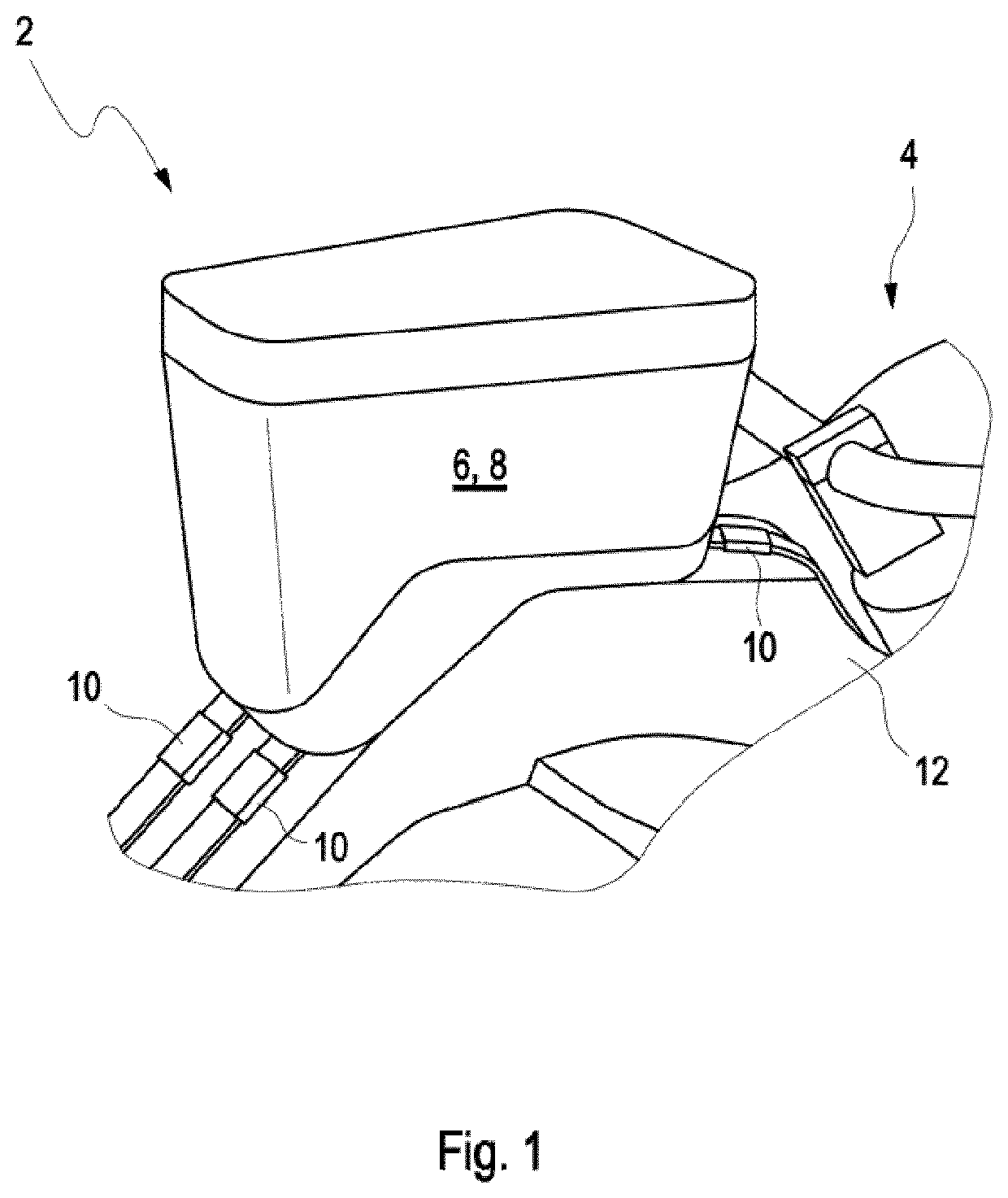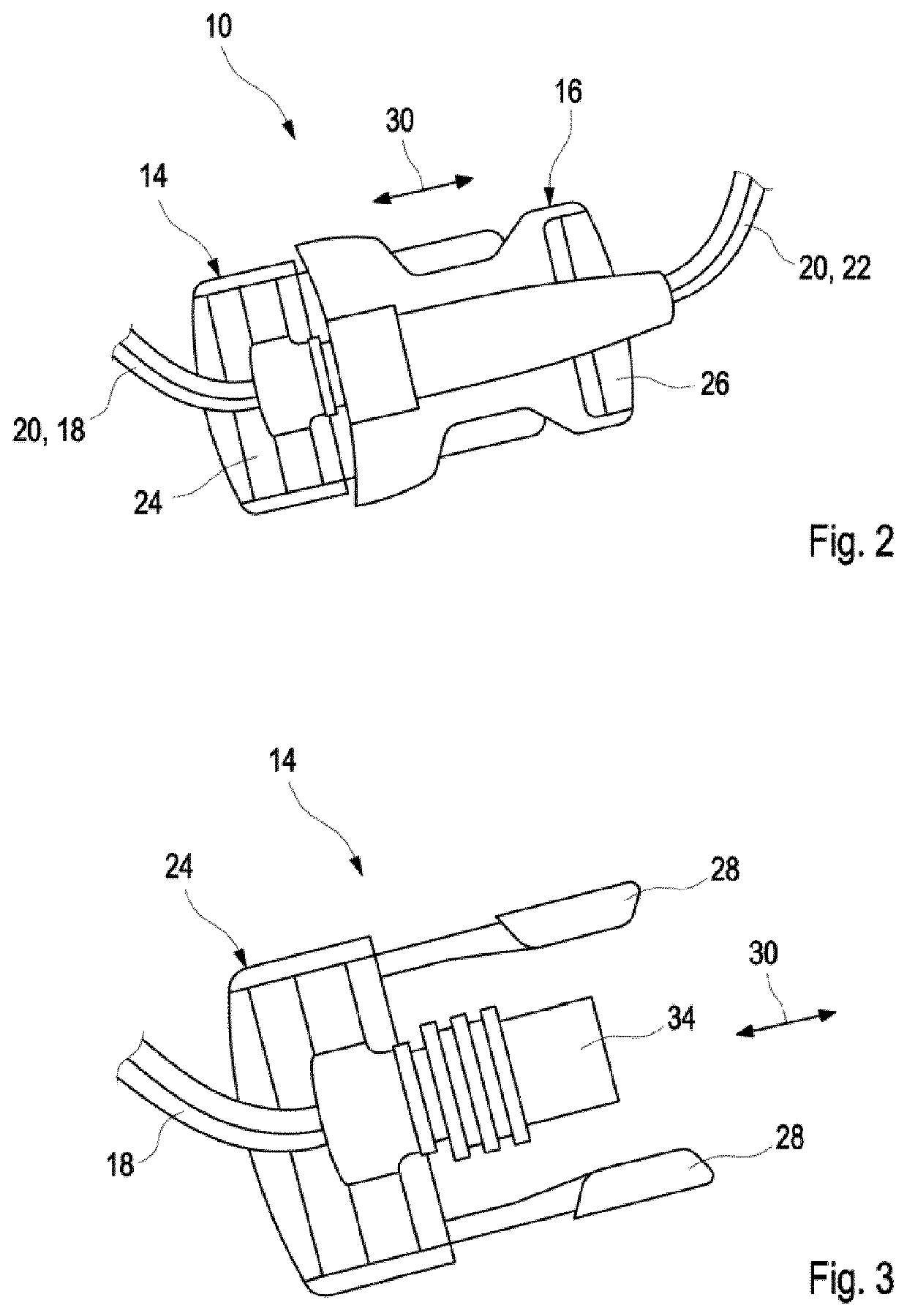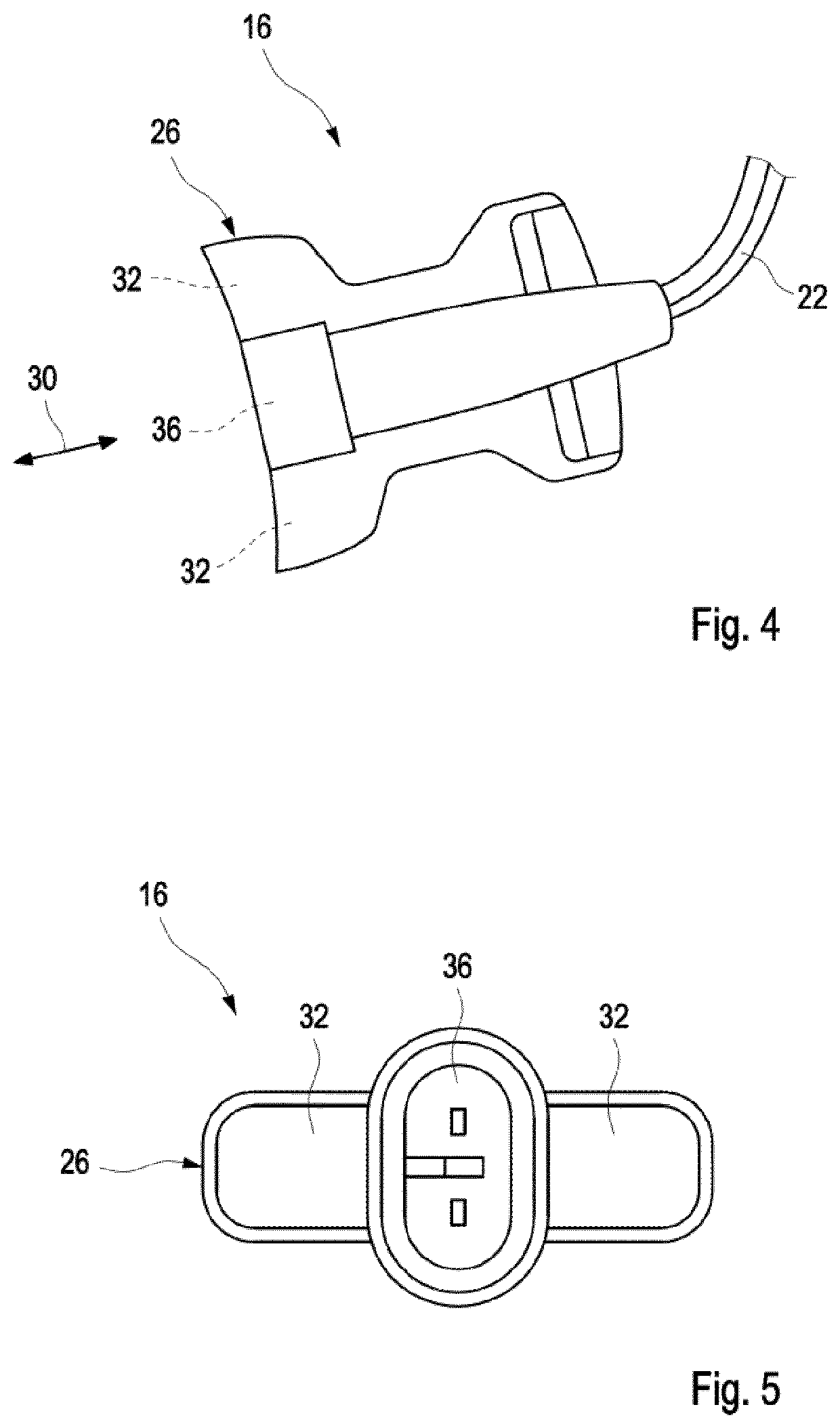Fixing Device for Detachably Fixing a Body to a Motor Vehicle, and Luggage-Carrying Device
- Summary
- Abstract
- Description
- Claims
- Application Information
AI Technical Summary
Benefits of technology
Problems solved by technology
Method used
Image
Examples
Example
DETAILED DESCRIPTION OF THE DRAWINGS
[0033]FIG. 1 shows a luggage-carrying device, provided overall with the designation 2, which can be arranged on a motor vehicle 4. The luggage-carrying device 2 comprises a body 8 which is formed as a luggage container 6 and which can be fixed to a vehicle component 12 of the motor vehicle 4 by at least one fixing device 10.
[0034]FIG. 1 shows an exemplary embodiment of the luggage-carrying device 2 in which the luggage-carrying device 2 comprises a total of three fixing devices 10.
[0035]An embodiment of the fixing device 10 will now be discussed by using FIGS. 2 to 5.
[0036]FIG. 2 shows a fixing device 10 in a joined arrangement. In the latter, a first fixing device 14 is fixed to a second fixing device 16 in a coupled manner. Furthermore, a first conductor 18 of an electrical line 20 is integrated into the first fixing device 14. A second conductor 22 of the line 20 is integrated into the second fixing device 18.
[0037]FIG. 2 shows an exemplary emb...
PUM
 Login to View More
Login to View More Abstract
Description
Claims
Application Information
 Login to View More
Login to View More - R&D
- Intellectual Property
- Life Sciences
- Materials
- Tech Scout
- Unparalleled Data Quality
- Higher Quality Content
- 60% Fewer Hallucinations
Browse by: Latest US Patents, China's latest patents, Technical Efficacy Thesaurus, Application Domain, Technology Topic, Popular Technical Reports.
© 2025 PatSnap. All rights reserved.Legal|Privacy policy|Modern Slavery Act Transparency Statement|Sitemap|About US| Contact US: help@patsnap.com



